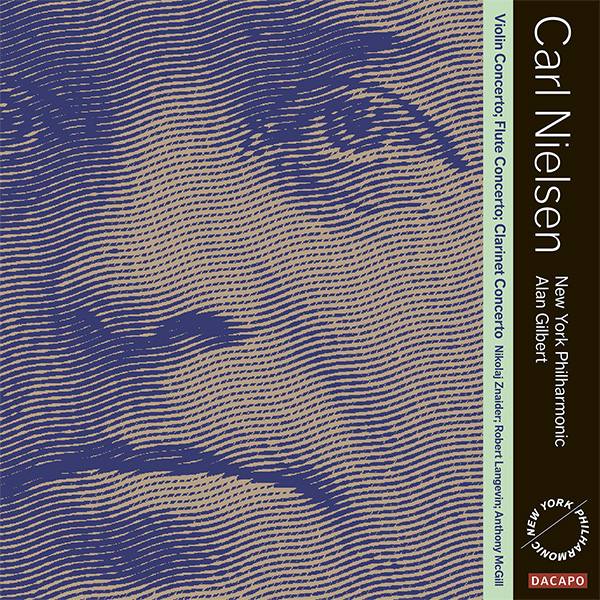
New York Philharmonic, Alan Gilbert – Nielsen: Violin Concerto, op.33; Flute Concerto, FS 119; Clarinet Concerto, op.129 (2015)
FLAC (tracks) 24 bit/96 kHz | Time – 01:17:16 minutes | 1,27 GB | Genre: Classical
Studio Masters, Official Digital Download | Front Cover | ©
CREEP INTO THE SOULS OF THE INSTRUMENTS :: Carl Nielsen’s three solo concertos, along with his six symphonies, constitute the core of his orchestral music. Like the symphonies, each of the three concertos relates to the classical tradition in its own way. At the same time they show how Carl Nielsen developed, and increasingly distanced himself from the conventions. “I began by composing with the piano, later rearranging for the orchestra. The next stage was that I wrote my score directly for the instruments. Now I think in terms of the instruments themselves – I sort of creep into their souls,” said Carl Nielsen at the age of 60. It is this personification of the instruments that makes the three solo concertos so individual. In the Violin Concerto there is moreover a quite personal empathy with the solo instrument, because Nielsen was originally a violinist himself.
Violin Concerto :: As a little boy Carl Nielsen was already playing the violin at weddings and feasts in the countryside: improvised dance music that continued until sunrise. From his early youth as a folk fiddler there is a radical leap to 1889, when Carl Nielsen was engaged at the age of 24 as a violinist in the Royal Danish Orchestra in Copenhagen. He never had a true career as a performing soloist, and he only wrote the Violin Concerto after resigning from his orchestral position to concentrate on composing. It is unlikely that he would have been able to perform the solo part himself.
Most of the Violin Concerto was written in Edvard Grieg’s “composer’s hut” at Troldhaugen, which Nielsen was invited to borrow in the summer of 1911 by Grieg’s widow, Nina, who was half-Danish. Carl Nielsen himself conducted the first performance in Copenhagen, in 1912, which also featured the new Symphony No. 3, Sinfonia espansiva. It was an epoch-making evening for both Nielsen and Danish music. The soloist was the Royal Orchestra’s first violinist, Peder Møller, who in subsequent years well nigh had a patent on the Violin Concerto. Later it was primarily Nielsen’s son-in-law and confidant, the Hungarian violinist Emil Telmányi, who performed it.
The Violin Concerto is unconventional and may seem confusing if one has not encountered Nielsen’s music before. It is in fact one of his most typical works, where several sides of his personality emerge in close order. The work is constructed in two large halves, each of which is divided into a slow and a fast section – an unusual but clear structure.
The introduction is drastic: a giant solo cadenza over a pedal point. Here we meet the striving artist, and in Bach style Nielsen names this opening section Praeludium. As a contrast to the expansive gestures this is followed by a much more idyllic theme of graceful but downto- earth beauty.
Abruptly Nielsen shifts into the main part of the concerto, designated Allegro cavalléresco – that is, chivalric and proud. The violin comes to the fore as a conqueror who knows his value, and Nielsen expresses his highly original thematic material with vitality and rounds it off with yet another great solo cadenza – this time in the ‘right’ place in a classical concerto.
The second part begins with the oboe’s searching theme over the notes B-A-C-H. The odd motif is perfectly suited to Nielsen’s chromatic scanning of the borderland between major and minor. As in the first part, this intense, solemn passage moves abruptly into music of a quite different, outward-looking character: a teasing rondo in which Nielsen unleashes his inner folk fiddler. At the time some people thought the composer was gambling away his seriousness here. Could a grandly conceived solo concerto also be amusing? Nielsen, one of the greatest humorists of classical music, described the final movement to his wife as “a kind of half-cute, half-cheerful, rickety movement, almost without willpower, but good-natured and engaging like a warmly smiling layabout at his best moments. Do you like such a fellow?” he added self-ironically – at 46 still a very boyish man.
Flute Concerto :: The other two concertos come from a different phase of Nielsen’s life. In the 1920s his music made serious headway in the rest of Europe, and as a modernist he was now measured against both Bartók and Schoenberg.
It is no coincidence that his last two concertos are for wind instruments. After writing his Wind Quintet in 1922 Carl Nielsen had the urge to write a concerto for each of the quintet’s five instruments, and at the same time to portray the personalities of the musicians who had given his chamber music work its first performance. Unfortunately only two of the planned five wind concertos were completed before Nielsen died in 1931.
The Flute Concerto is from 1926, and was given its first performance the same year at a Carl Nielsen event in Paris that a number of benefactors had set up to present the Danish composer to an international audience. Ravel, Honegger and Roussel were among the colleagues he met on this occasion, and critics from several countries reported home. The flute soloist was the French-trained Holger Gilbert-Jespersen, and Emil Telmányi conducted. The reactions to the new Flute Concerto were predominantly positive, and Carl Nielsen was even awarded the Legion of Honour.
The Flute Concerto is a marvellous example of Carl Nielsen’s late style: restless but precise, with incisive humour but a warm heart. Once more the concerto is given a twofold structure, but tightened up considerably. The flow is quick and varied, and the duration is only half that of the Violin Concerto (“That’s enough for a flute,” said Carl Nielsen). The omission of all the brass but one makes the soundscape more transparent, but Nielsen pulls no punches, and his Flute Concerto is unusually dynamic.
It begins flickeringly, in search of a fixed key, and even after the statement of first and second subjects nothing is yet certain. The flute must share the first solo cadenza with the clarinet, and in the development section marching timpani and a threatening bass trombone make the soloist screech like a bird that has caught sight of a predator.
Then the orchestra settles on a theme that at last gives the flute peace of mind. “The flute cannot deny its nature, it belongs in Arcadia and prefers the pastoral moods; the composer therefore has to adapt to this gentle nature if he will not risk being branded as a barbarian,” Carl Nielsen wrote in a witty programme note. All the same the movement ends unresolved, with the rumble of the timpani during the last solo cadenza.
The second movement attempts to put the conflicts behind it with a naive melody, but soon the flute must take a stand with an inward, melancholy Adagio theme. Things brighten up a little with a cheering tempo di marcia 6/8 version of the first subject, but not enough to make the Adagio theme disappear. How is this to end? In wonderfully bizarre fashion Nielsen lets the swaggering trombone put things in their place; it barges in with the march theme and pilots the whole work into harbour with the pastoral theme from the first part. The flute is perplexed at its betrothal with its odd partner, but the point is typical of Carl Nielsen: agreement is not necessarily bliss. Fertile contrasts produce life and desire.
Clarinet Concerto :: The Clarinet Concerto, from 1928, is Carl Nielsen’s most radical work of all, and was rather frightening to his contemporaries. “Perhaps it doesn’t sound so good, but it doesn’t amuse me to compose music if I have to carry on in the same way,” he wrote to his pupil Nancy Dalberg.
Nielsen had a great sense of the personality of the clarinet. He got to know it as a boy from an old blind folk musician who showed him how the clarinet could both weep and laugh, and in Copenhagen Nielsen’s enthusiasm for the clarinet was further stoked by the temperamental clarinettist Aage Oxenvad of the Royal Orchestra. The extreme fluctuations in the Clarinet Concerto are very much inspired by him.
“The clarinet can be at once warm-hearted and utterly hysterical, mild as balm and shrill as a tramcar on poorly greased rails,” was one of Nielsen’s descriptions.
The orchestral ensemble in the Clarinet Concerto is shaved down to just the strings, two horns and two bassoons, as well as an important secondary role for the snare drum, which functions as a sidekick even more than the trombone does in the Flute Concerto. In his Fifth Symphony Nielsen had already made clarinet and drum act as a dynamic combination with destructive powers, and here they are driven even further out.
The music progresses entirely without breaks between the movements, and although one can subdivide the concerto into four contrasting sections, it is best conceived as one long scene. This time the conflict is played out in the polyphony, which is neither for nor against a fixed key. “I have such free motion in the instruments that I really have no idea of how it will sound,” Nielsen wrote with satisfaction about his bold score. Soloist and orchestra urge one another forward with the snare drum as third party, alternatively inciting and dividing. The clarinet is moreover up against its own temperament – already in its first melodic entry it loses control, and after just a few minutes the lid is blown off the kettle in a choleric double cadenza together with the drum.
The starting point for the whole concerto is the initial subject in cellos and basses, which recalls a lopsided Danish hopsa played with a prowling slowness. The second recurring theme in the concerto is poco adagio and exhibits a deep melancholy that becomes ever more intense each time it appears. It is more painful even than the satanic march passages in the concerto. In the last section the clarinet – like the violin in its own concerto – pulls out a teasing folk-dance like motif. That lightens things up, but even though the Concerto is rounded off in a kind of spirit of conciliation, it never achieves a true serenity. Peace in our time? Hardly!
Carl Nielsen’s Clarinet Concerto is the most important clarinet concerto from the twentieth century, and one of his most singular works, because his imagination is allowed to unfold without tonal ties. At the first performance in Copenhagen there were few who saw a future for the work. That delighted Carl Nielsen, who summed up the debate for a newspaper: “It was very amusing. It shows after all that one is not quite sacrosanct yet, that one is still alive and has hope and possibilities for development. If you have arrived where no one dares take you down a peg, only then have you been placed outside the game and are ready to take your place in the museum.” – Jens Cornelius, 2015
Tracklist:
01. Nikolaj Znaider, New York Philharmonic, Alan Gilbert – Violin Concerto, op.33 – I. Prelude Largo – Allegro cavalleresco (18:43)
02. Nikolaj Znaider, New York Philharmonic, Alan Gilbert – Violin Concerto, op.33 – IIa. Poco adagio – (06:19)
03. Nikolaj Znaider, New York Philharmonic, Alan Gilbert – Violin Concerto, op.33 – IIb. Rondo – Allegretto scherzando (10:06)
04. Robert Langevin, New York Philharmonic, Alan Gilbert – Flute Concerto, FS 119 – I. Allegro moderato (10:54)
05. Robert Langevin, New York Philharmonic, Alan Gilbert – Flute Concerto, FS 119 – II. Allegro un poco (07:21)
06. Anthony McGill, New York Philharmonic, Alan Gilbert – Clarinet Concerto, op.129 – I. Allegretto un poco – (08:07)
07. Anthony McGill, New York Philharmonic, Alan Gilbert – Clarinet Concerto, op.129 – II. Poco adagio – (04:49)
08. Anthony McGill, New York Philharmonic, Alan Gilbert – Clarinet Concerto, op.129 – III. Allegro non troppo – Adagio – Allegro vivace (10:55)
Personnel:
New York Philharmonic
Alan Gilbert, Music Director and Conductor
Nikolaj Znaider, violin
Robert Langevin, flute
Anthony McGill, clarinet
Download:
https://hexload.com/nmmvlb7wqdgx/NielsenCarlTheThreeC0ncert0sNewY0rkPhilharm0nicAlanGilbert20159624.part2.rar
https://xubster.com/r2jtu435exe5/NielsenCarlTheThreeC0ncert0sNewY0rkPhilharm0nicAlanGilbert20159624.part1.rar.html
https://xubster.com/9idlr5b61hxu/NielsenCarlTheThreeC0ncert0sNewY0rkPhilharm0nicAlanGilbert20159624.part2.rar.html



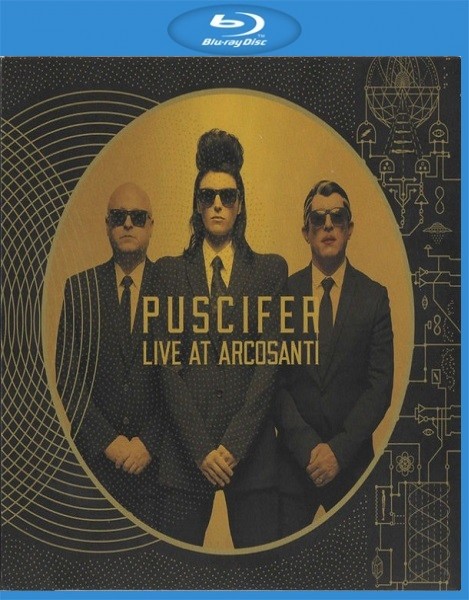

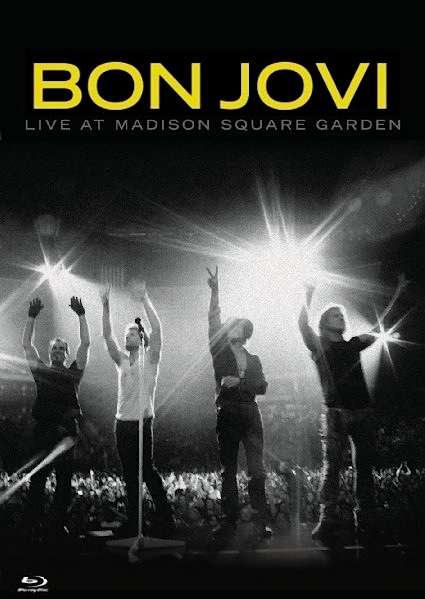
![New York Philharmonic, Fritz Reiner, Rudolf Serkin – Fritz Reiner conducts Bartok and Kodaly live 1960 (2022) [Official Digital Download 24bit/96kHz]](https://imghd.xyz/images/2022/10/21/bhvp3fqdxmtoa_600.jpg)
![New York Philharmonic, Dimitri Mitropoulos – Dimitri Mitropoulos conducts Berlioz Hd Mastering (Remastered 2022) (2022) [Official Digital Download 24bit/88,2kHz]](https://imghd.xyz/images/2022/10/21/q262a1i47hola_600.jpg)
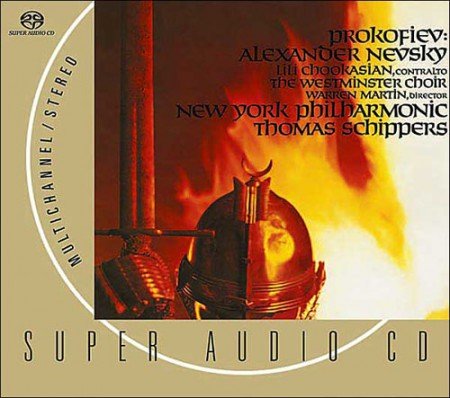
![New York Philharmonic Orchestra, Alan Gilbert – Nielsen: Symphonies Nos. 5 & 6 (2015) [Official Digital Download 24bit/88,2kHz]](https://imghd.xyz/images/2023/07/25/0747313162567_600.jpg)
![New York Philharmonic Orchestra, Alan Gilbert – Nielsen: Symphonies Nos. 1 & 4 (2014) [Official Digital Download 24bit/88,2kHz]](https://imghd.xyz/images/2023/07/25/0747313162468_600.jpg)
![New York Philharmonic & Jaap van Zweden – Julia Wolfe: Fire in my mouth (2019) [Official Digital Download 24bit/96kHz]](https://imghd.xyz/images/2023/07/22/i1l93los9o3va_600.jpg)
![New York Philharmonic & Jaap van Zweden – David Lang: prisoner of the state (2020) [Official Digital Download 24bit/96kHz]](https://imghd.xyz/images/2023/07/22/dwm150rkrlbrc_600.jpg)
![New York Philharmonic, Jaap van Zweden – Beethoven: Symphonies Nos. 5 & 7 (2018) [Official Digital Download 24bit/96kHz]](https://imghd.xyz/images/2023/07/22/GQOIRfw.jpg)
![Alan Gilbert & NDR Elbphilharmonie Orchester – Bruckner: Symphony No. 7 (2019) [Official Digital Download 24bit/48kHz]](https://imghd.xyz/images/2023/07/14/vhitxlmlc3tva_600.jpg)

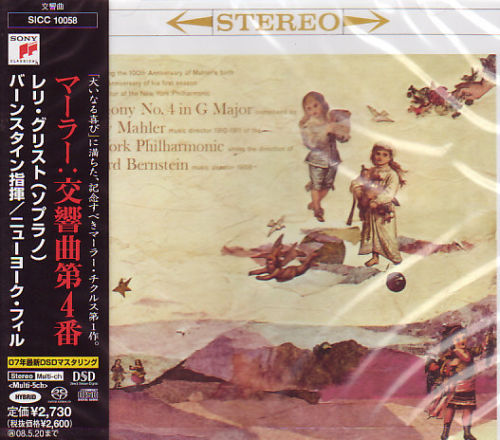
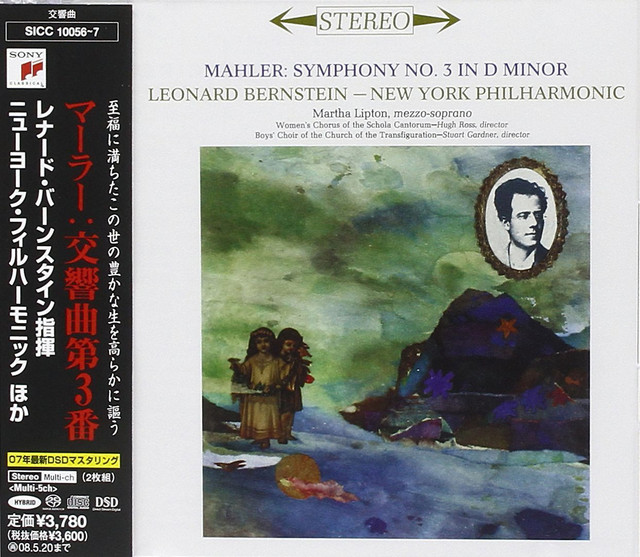
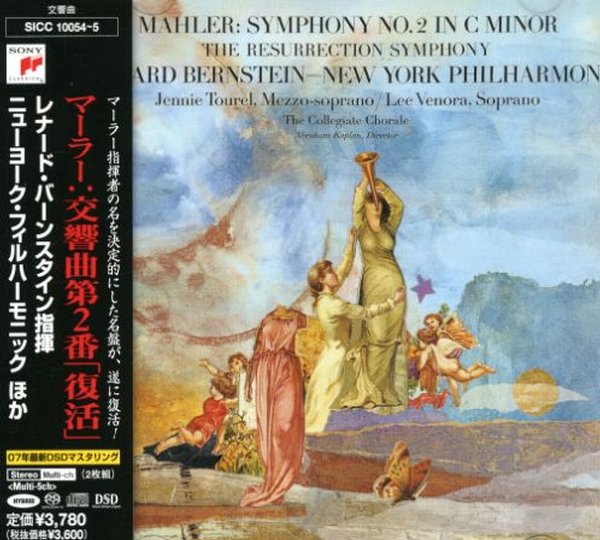
![Royal Stockholm Philharmonic Orchestra, Alan Gilbert – Mahler: Symphony No.9 (2009) [Official Digital Download 24bit/44,1kHz]](https://imghd.xyz/images/2023/06/09/7318599917108_600.jpg)
![New York Philharmonic, Lorin Maazel – Mahler: Symphony No. 8 (2009) [Official Digital Download 24bit/96kHz]](https://imghd.xyz/images/2023/06/09/0844185084505_600.jpg)
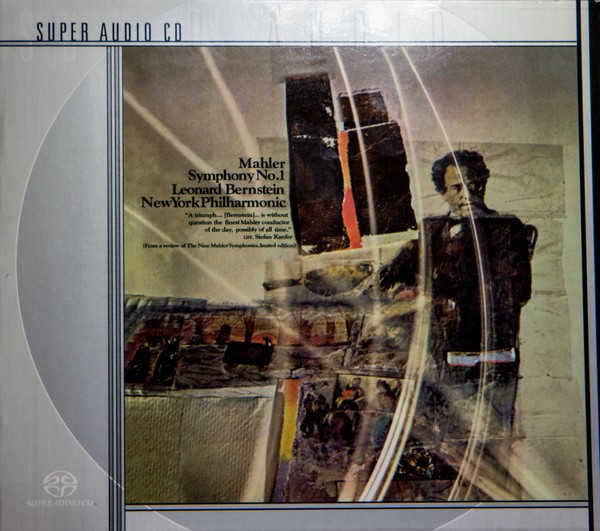
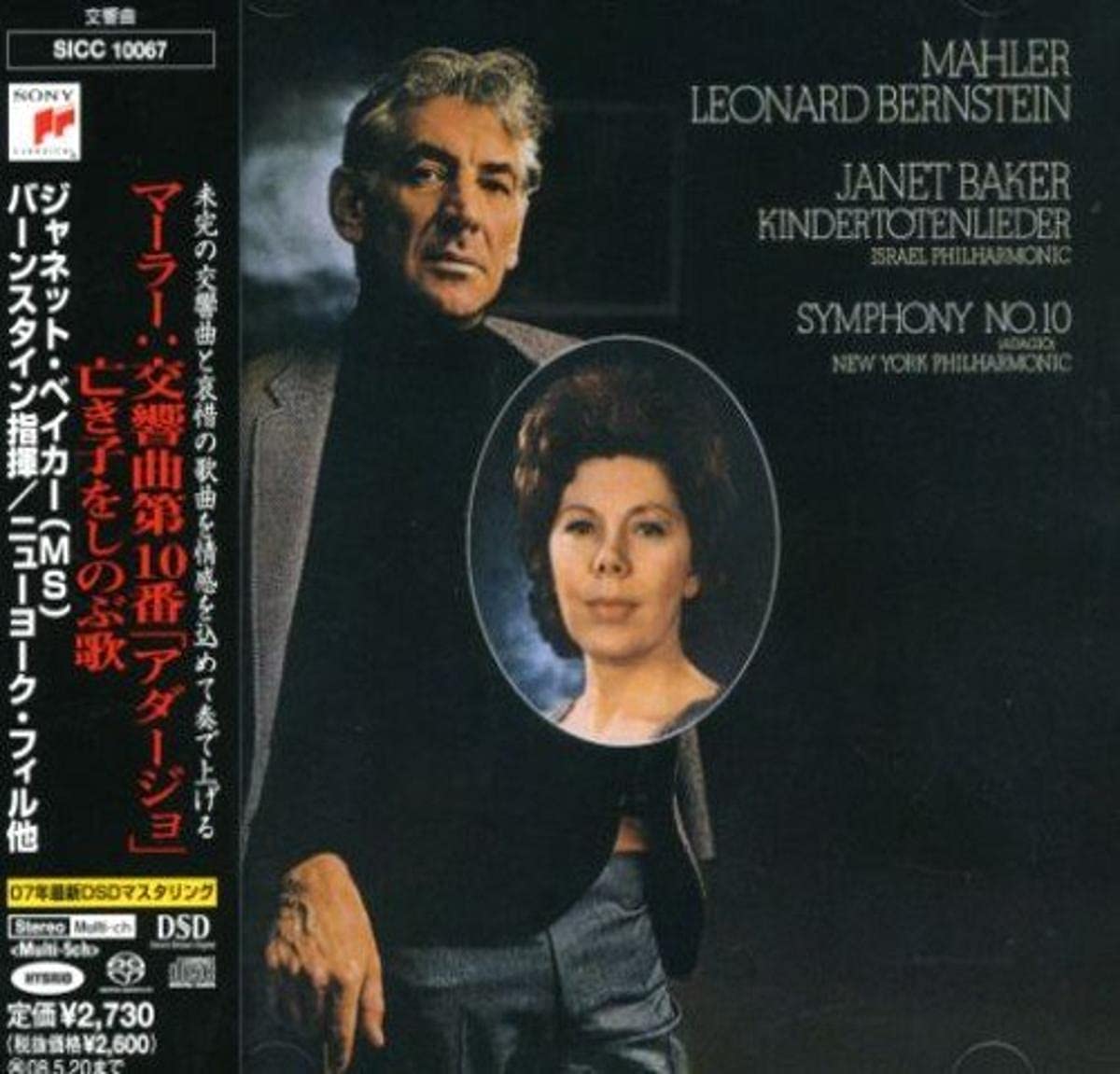
![Leonard Bernstein & New York Philharmonic – Bernstein Conducts Carl Maria von Weber (Remastered) (1976/2017) [Official Digital Download 24bit/192kHz]](https://imghd.xyz/images/2023/05/20/0886446463285_600.jpg)
![Leonard Bernstein, New York Philharmonic – Haydn: Mass In Time Of War & Symphony 96 (1973 & 1974) [Reissue 2017] MCH SACD ISO + Hi-Res FLAC](https://imghd.xyz/images/2023/05/11/jxoA1LR.jpg)
![Jaap van Zweden, New York Philharmonic – Stravinsky Le Sacre du printemps; Debussy La Mer (2019) [Official Digital Download 24bit/96kHz]](https://imghd.xyz/images/2023/04/03/zg2xq7xacdt7b_600.jpg)
![Inon Barnatan, Academy of St. Martin in the Fields & Alan Gilbert – Beethoven: Piano Concertos, Vol. 1 (2019) [Official Digital Download 24bit/96kHz]](https://imghd.xyz/images/2023/03/15/jn62g93vtdwgc_600.jpg)
![Isaac Stern, New York Philharmonic, Leonard Bernstein – Alban Berg & Belá Bartók Violin Concertos (Remastered) (2022) [Official Digital Download 24bit/96kHz]](https://imghd.xyz/images/2022/04/30/r0tsckrv4k5qb_600.jpg)
![Dimitri Mitropoulos, New York Philharmonic – Vaughan Williams Live Vol. 4 (2023) [Official Digital Download 24bit/44,1kHz]](https://imghd.xyz/images/2023/03/09/gy8uwzur26pqc_600.jpg)
![New York Philharmonic, George Szell – George Szell live conducting Anton Bruckner Symphony No. 8 (2022) [Official Digital Download 24bit/48kHz]](https://imghd.xyz/images/2023/01/31/vzzvuvpka19vc_600.jpg)
![New York Philharmonic, Dimitri Mitropoulos – Mozart: Concerto for 2 Pianos, K. 365 & Symphony No. 39, K. 543 (2021 Remastered) (2021) [Official Digital Download 24bit/48kHz]](https://imghd.xyz/images/2022/12/20/zhka5udbflvdb_600.jpg)
![Cifford Curzon, Leonard Rose, George Szell, New York Philharmonic – George Szell conducts Brahms Piano Concerto No. 2 and Mozart Violin Concerto No. 3 live (2022) [Official Digital Download 24bit/48kHz]](https://imghd.xyz/images/2022/12/14/w8w10zfirkc1a_600.jpg)
![New York Philharmonic, George Szell, Clifford Curzon – Bruckner and Mozart complete live concerto conducted by George Szell (2022) [Official Digital Download 24bit/48kHz]](https://imghd.xyz/images/2022/12/14/l70gwyutzp77a_600.jpg)
![Mack Harrell, Eduard Steuermann, Artur Rodzinksi, New York Philharmonic – Bloch and Schoenberg conducted by Artur Rodzsinki live (2022) [Official Digital Download 24bit/96kHz]](https://imghd.xyz/images/2022/12/14/izukudx8vdpsb_600.jpg)
![Berliner Philharmoniker, Frank Peter Zimmermann, Daniel Harding, Kirill Petrenko, Alan Gilbert – Beethoven, Berg, Bartók: Violin Concertos (2021) [Official Digital Download 24bit/192kHz]](https://imghd.xyz/images/2022/09/01/j4ca0p1vr1joc_600.jpg)
![Berliner Philharmoniker, Frank Peter Zimmermann, Alan Gilbert – Bartók: Violin Concerto No. 2 (2022) [Official Digital Download 24bit/192kHz]](https://imghd.xyz/images/2022/04/20/ap29z4mr0btlb_600.jpg)